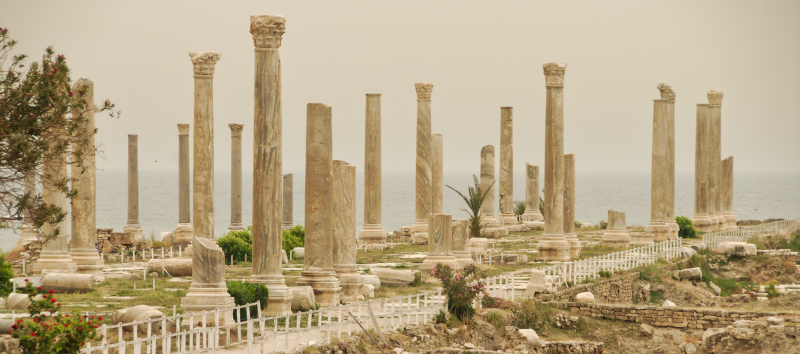
There are many reasons to travel all over the Middle East (and arguably many reasons not to travel to the Middle East at all), though one of the strongest arguments in favour of travel is to explore the many ancient ruins. With a long history, the Middle East boasts some of the most incredible remnants of ancient civilisations. However, with war constantly raging at various burning points, one can only wonder how long these ruins will still be standing.
Among the best ruins are those in Syria, Lebanon, Iran, Jordan, and Turkey. Palmyra, the ancient city in Syria, recently suffered damage during the ongoing civil war. Syria is famous for several ruins such as Palmyra. Bosra, Apamea, and Krak des Chevaliers.
The latter is a Crusader castle, rather than an ancient city. While Palmyra is quite large, Baalbek in Lebanon is generally regarded as the best preserved of all the ruins across the middle East. The ages of these ruins vary generally from around 500 B.C. to about 500 A.D.
The Middle East is home to the cradle of civilisation where many of the world’s oldest ruins give us insight into the cultures of the earliest human settlements.
As one stares at the columns and weathered stones, you can’t help but to wonder what these buildings looked like at the apogee of these civilisations. Persepolis, meaning “city of the Persians, is one of the best documented ancient civilisations.
While it flourished beyond any other place in the region at its apogee, Alexander the Great didn’t think it was worth keeping it for the future, so he looted it and then (accidentally) burned it down to just the few pillars we are seeing today. Indeed an incredible experience to walk around these ancient ruins across the Middle East.
1. Palmyra – SYRIA
Palmyra (meaning “city of palm trees”), also known as Tadmur, is an ancient Roman city located 210 km (130 mi) northeast of Damascus. It was known as the “Bride of the Desert” as it was a vital caravan stop for traders on the Silk Road crossing the desert in the 3rd century B.C. It flourished during the Bronze Age up to the Ottoman empire. The city started to fade away since 634 A.D. when it fell into Muslim control.
See the huge temple of Ba’al, the Great Colonnade, the Roman theater, and the Qala’at Ibn Maan fortress. During the current Syrian Civil War the army set up camp here and caused much damage.

2. Baalbek – LEBANON
Known as “City of the Sun”, Baalbek is located in the Bekaa Valley, about 80 km (50 miles) east of Beirut.
While early history is unknown, it was under control of the Egyptians, and then the Greeks who called it Heliopolis. Then the Romans took over, then passed into Byzantine hands and later came under Arab domination (637 A.D.). More recently controlled by Syria and currently by Lebanon.
Baalbek is most famous for its Temple of Bacchus and the tall colonnades.
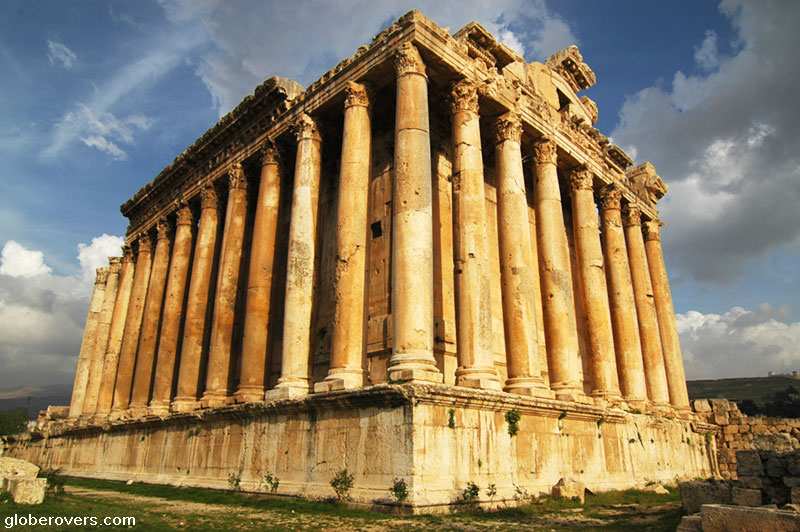
3. Persepolis – IRAN
Persepolis is an ancient capital of the kings of the Achaemenian dynasty of Persia (Iran), located 50 km (30 mi) northeast of Shīrāz. The city dates back to 515 B.C. and was built on the order of King Darius I and expanded during the reign of his son, King Xer-xes the Great. Alexander the Great looted and destroyed the city in 330 B.C. and it was abandoned around 200 B.C.
It is known for its colonnades, Gate of All Nations, Apadana Palace, Throne Hall, and the Tombs of Kings.
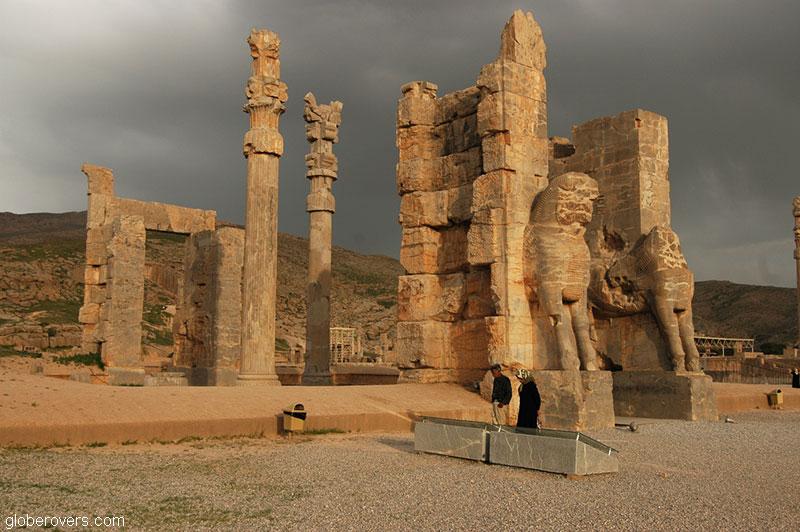
4. Petra – JORDAN
The ancient city of Petra, known as the Rose City, is famous for its rock-cut architecture and water conduit system. Located about 230 km (143 mi) south of Amman, the city was the centre of an Arab kingdom in Hellenistic and Roman times. The Nabataeans, an Arab tribe, carved the city out of sandstone around 300 B.C. In 106 A.D it became part of the Roman Empire but then declined and abandoned after severe earthquakes in 663 B.C.
The cave ruins stretch over a large area. Best known is The Treasury.
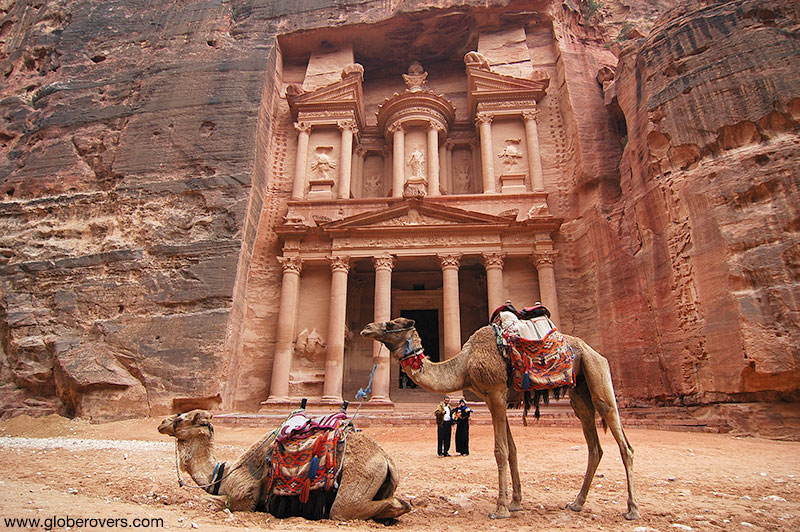
5. Jerash – JORDAN
The Roman city of Jerash was already inhabited during the Bronze Age (3200 B.C. – 1200 B.C.). It is now considered as one of the best preserved Roman provincial towns in the world. Much of the city was destroyed in an earthquake in 749 A.D.
Jerash is located 40 km (25 mi) north of Amman.
Among the most impressive sites are the Cardo Maximus colonnades, Hadrian’s Arch, Oval Plaza, and both the North and the South Theatres.

6. Bosra – SYRIA
This ancient Nabatean city was founded around the 2nd century B.C. It prospered during the Roman era, and into the Islamic era, but became gradually less prominent during the Ottoman era.
Bosra is located 120 km (75 mi) south of Amman. The most prominent site is the 2nd century Roman theater with its fortified upper gallery in the form of a covered portico. Also see the small ruins of Nabatean and Roman monuments, churches, mosques, and the Bab al-Hawa Gate.

7. Ephesus – TURKEY
The ruins of the ancient Greek city of Ephesus lie near the modern village of Selçuk in western Turkey, 600 km (373 mi) southwest of Istanbul.
Founded in about 600 B.C., the city flourished under the control of the Romans since 129 B.C. However, it was partially destroyed by an earthquake in 614 A.D. and the city then declined. The city was most famed for the Temple of Artemis (completed around 550 B.C. and destroyed in 401 A.D.). Incredible ruins to see today.
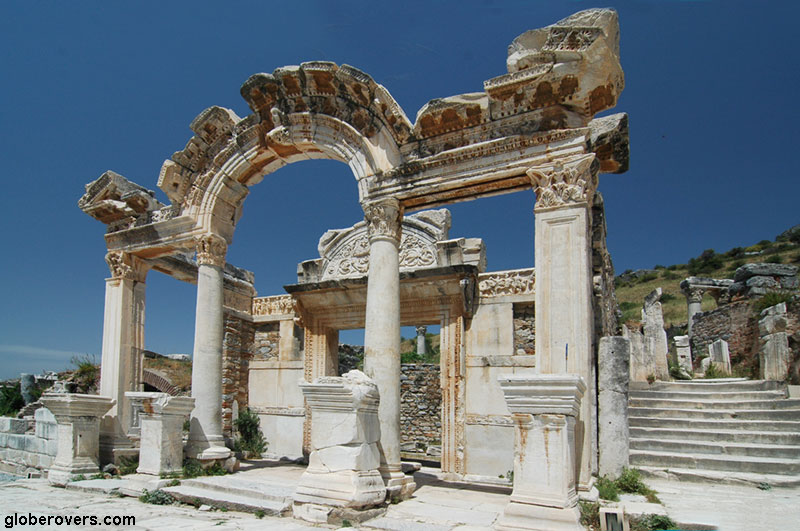
8. Hierapolis – TURKEY
The ancient city of Hierapolis is located on hot springs in the southwestern Anatolian plateau, next to the Pamukkale terraces of carbonate minerals. It is about 600 km (373 mi) south of Istanbul.
Founded as a thermal spa early in the 2nd century B.C., the city came under Roman control but in 17 A.D. an earthquake destroyed it.
See the Theatre, St. Philip Martyrium, Temple of Apollo, Pluto’s Gate, and swim in the ancient hot springs.
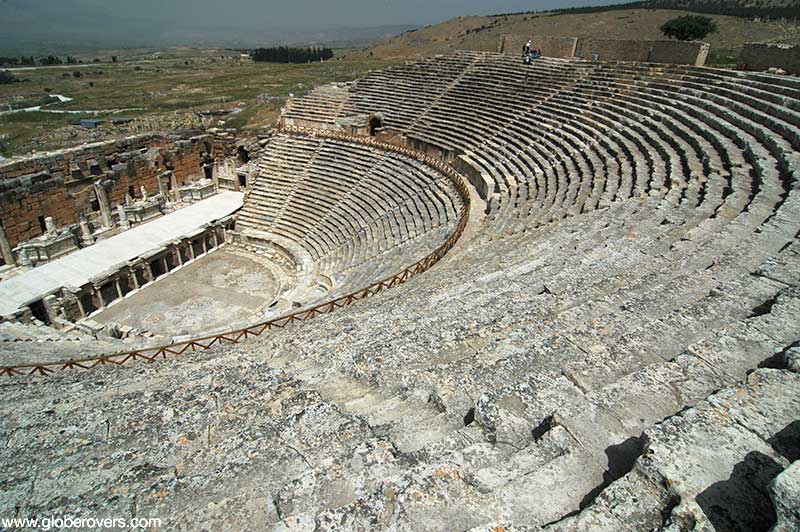
9. Tyre – LEBANON
Tyre (also now known as Sour) is an ancient Phoenician city located 90 km (56 mi) south of Beirut. It was founded around 2750 B.C. and as a port city it was frequently conquered by invading forces.
Located close to the Israeli border it has come under heavy bombardments during the 1970’s and 80’s, as well as in 2006.
See the Al-Mina Archaeological Site, and the Triumphal Arch.
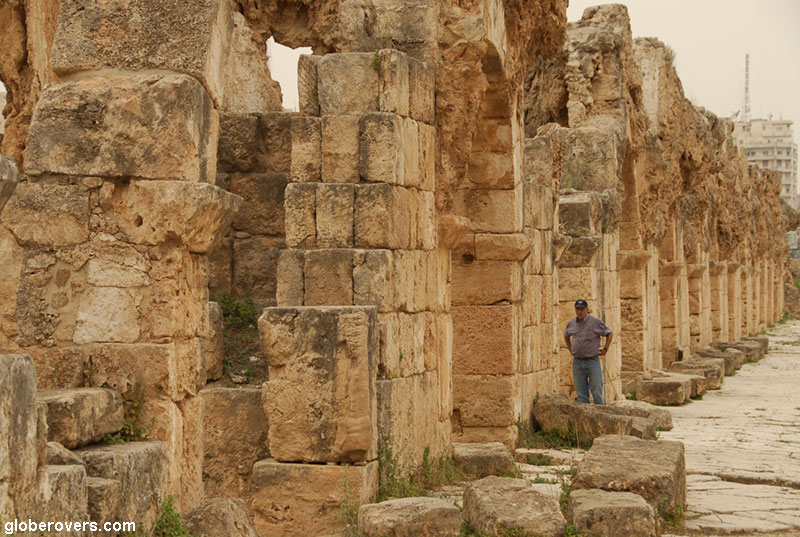
10. Apamea – SYRIA
Apamea, on the banks of the Orontes River, was a city of the Seleucid kings founded in 300 B.C., fortified and expanded by King Seleucus I Nicator in 300 B.C. It was destroyed by Khosrau I (the 22nd Sasanian Emperor of Persia) in the 6th century, then partially rebuilt, but finally destroyed by an earthquake in 1152.
Located 120 km (75 mi) north of Homs, it is next to the village of Qala’at al-Mudiq. See the Great Colonnade (Cardo Maximus), Agora, and the Votive Column.

☛ Read more: Ancient Ruins of the World

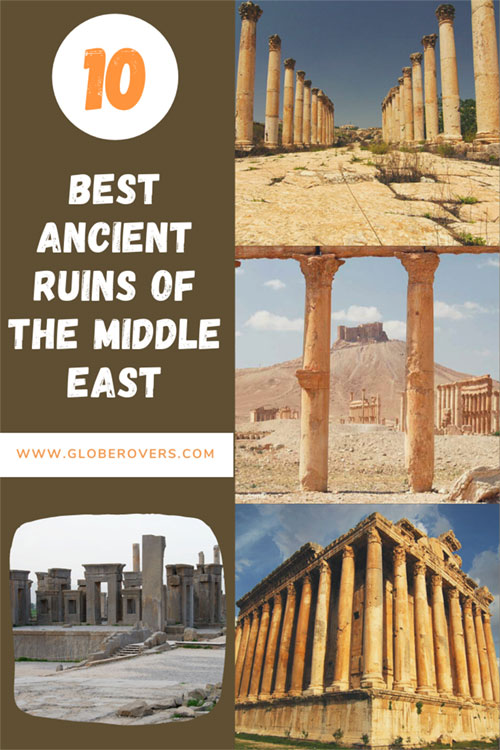

Blog post and photos by Peter who has been travelling almost full-time since 2005 and has been to over 122 countries. He visited several countries, such as Japan, more than 20 times. Peter is Editor-in-Chief and Publisher of GlobeRovers Magazine, an independent travel magazine focused on intrepid destinations.
